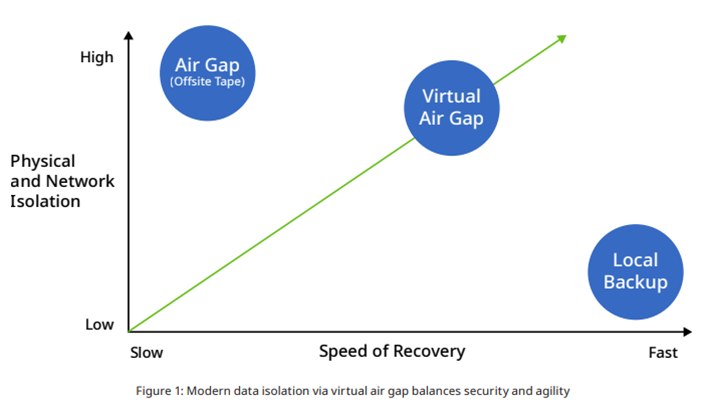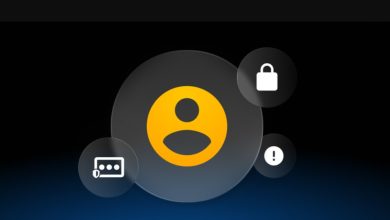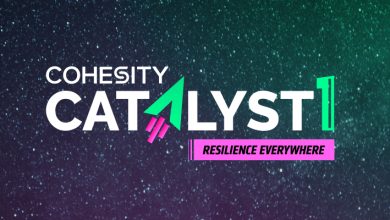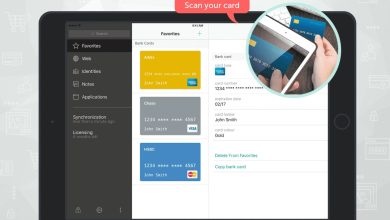Cohesity FortKnox: A Robust Tool for Data Isolation and Rapid Recovery

In the aftermath of COVID-19, organisations witnessed their workforce either working remotely, usually from home, or on their personal devices, grabbing the attention of massive ransomware campaigns and bad actors. In addition, other factors, such as slow and costly data recovery operations through traditional means, led organisations to question the viability of conventional forms of data security and recovery.
In fact, according to Cohesity research, although the threat of cyber attacks has increased, the level of collaboration between IT and SecOps has remained stagnant or has declined. This is important to note because traditionally, security teams are tasked with preventing cyber attacks, while IT teams focus on data protection, which includes backup and recovery. The lack of collaboration between IT and SecOps leaves organisations more exposed, and most IT and security operations decision-makers believe that the consequences of that exposure could be devastating for businesses as well as for careers.

That is precisely why Cohesity stepped in and addressed the concerns of business entities, including those in Southeast Asia, with FortKnox. Highly advanced yet uncomplicated, FortKnox is a Software-as-a-Service (SaaS) data isolation and recovery mechanism embedded in Cohesity Helios, the company’s next-generation data management interface, along with its other products like DataProtect and Site Continuity operating on Amazon Web Services (AWS).
FortKnox is a complementary tool that runs parallel to Cohesity’s on-premises data storage. When using FortKnox, an immutable or unchangeable copy of data is stored in a secure off-site or remote cloud managed by Cohesity through a virtual air gap mechanism. In the event of data loss or any other disaster, replicated data is retrieved from a Cohesity-administered cloud vault to either the original or alternate location, such as Microsoft Azure, AWS, or Google Cloud.
The traditional means of data isolation and recovery, such as magnetic tape, uses the 3-2-1 data backup model, meaning three different copies are stored on two separate channels with one of them located in a remote setting. The critical issue with magnetic tape is the slower recovery of the data, often leading to poor Service Legal Agreements (SLAs), a form of legal and mutual binding between the service provider and the user (customer) based on mutual responsiveness and responsibilities.
In order to ensure data is not only well protected but also quickly recoverable when it’s needed most, modern enterprises have to seriously consider a more modern 3-2-1 backup strategy – one that includes a virtual air gap that offers both physical and network isolation. This will enable the enterprise to strike a balance between robust data protection and the speed of recovery.

Cohesity FortKnox was designed to augment this backup strategy by instantaneously recovering a copy of data from a Cohesity-controlled cloud through a virtual air gap, significantly improving SLA and cyber resiliency.
How does FortKnox keep data safe? It is perhaps the fundamental question here. First, not every employee can access the Cohesity-managed cloud, as the entry process is highly restricted, and only validated and authorised people can access it since FortKnox follows the zero-trust model. Secondly, data recovery is impossible without the approval of at least two people who are authorised for approval. Moreover, Cohesity-managed keys ensure operational isolation. Whether still or in motion, data is encrypted and requires multi-factor authentication to be accessed. Last but not least: The anomaly detection tool incorporated in the Helios Platform is best at identifying ransomware or glitches.
There are various benefits of using Cohesity’s FortKnox. Since it is integrated with Cohesity’s Threat Defense Architecture, it provides an additional layer of security, allowing organisations to remain a step ahead of external and internal threats. FortKnox entirely prohibits the modification or alteration of data, meaning the originality of the data can never be manipulated. In other words, even if the genuine data is distorted by the ransomware attack, the organisations will always have an identical copy secured in a Cohesity-managed cloud vault.
Moreover, by using a single User Interface (UI), Cohesity Helios, customers can manage data-related tasks with convenience and ease. Such benefits with no extra Capital Expenditure (CapEx) investments make Cohesity FortKnox an ideal choice for organisations looking forward to securing their data, especially in the contemporary times when the corporate sector is battling against profoundly active and innovative cybercriminals.
To find out more about Cohesity FortKnox and how it operates to save and recover your data, watch this introductory video.





